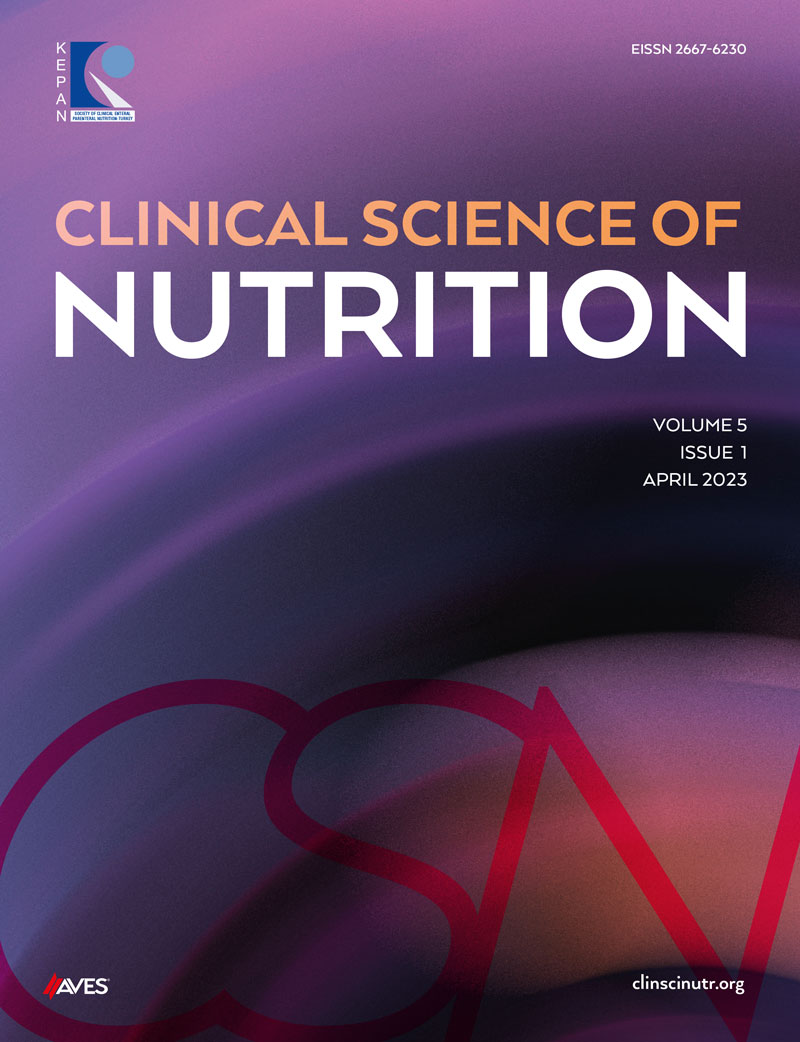Abstract
Objective: Patients receiving treatment and care in a palliative care center are at high risk of malnutrition. This study aimed to determine the malnutrition status of patients hospitalized in a palliative care center using different scales and to compare them with the results of the Global Leadership Initiative on Malnutrition criteria.
Methods: The geriatric nutritional risk index, prognostic nutritional index, Mini-nutritional Assessment—Short Form, Nutritional Risk Screening-2002, and Global Leadership Initiative on Malnutrition criteria were used for the evaluations of nutritional status. A questionnaire to recognize the sociodemographic characteristics of the participants and the modified Charlson comorbidity index was administered to the patients.
Results: A total of 120 patients were included in the study. The mean age of the participants was 69.9 ± 15.9 years; 47.5% were women and 60.8% were married. According to the Global Leadership Initiative on Malnutrition criteria, 83.3% of the participants had malnutrition. There was no statistically significant relationship between malnutrition and gender, marital status, and having a caregiver (formal or informal) (P = .462, P = .358, and P = .098, respectively). Patients with malnutrition were older and had higher modified Charlson comorbidity index scores (P = .010 and P = .001, respectively). Geriatric nutritional risk index, prognostic nutritional index, Mini-nutritional Assessment—Short Form, and Nutritional Risk Screening-2002 tests showed malnutrition risk in 72.5%, 95%, 98.3%, and 84.2% of the participants, respectively. In the receiver operating characteristic curve analysis performed using the Global Leadership Initiative on Malnutrition criteria, the area under the curve values for geriatric nutritional risk index, prognostic nutritional index, Mini-nutritional Assessment—Short Form, and Nutritional Risk Screening-2002 were 0.797, 0.749, 0.927, and 0.781, respectively. The cutoff value of Mini-nutritional Assessment—Short Form tool to indicate malnutrition risk was ≤5 points, with 85% sensitivity, 90% specificity, and 54.5% negative predictive and 97.7 positive predictive values.
Conclusion: Although each screening test showed a high agreement with the Global Leadership Initiative on Malnutrition criteria, a Mini-nutritional Assessment—Short Form score of ≤5 points had the highest sensitivity and specificity to diagnose malnutrition risk in palliative care ward.
Keywords: Diagnosis, inpatient, malnutrition, palliative care
Copyright and license
Copyright © 2023 The author(s). This is an open-access article under the terms of the Creative Commons Attribution License (CC BY) which permits unrestricted use, distribution, and reproduction in any medium or format, provided the original work is properly cited.










